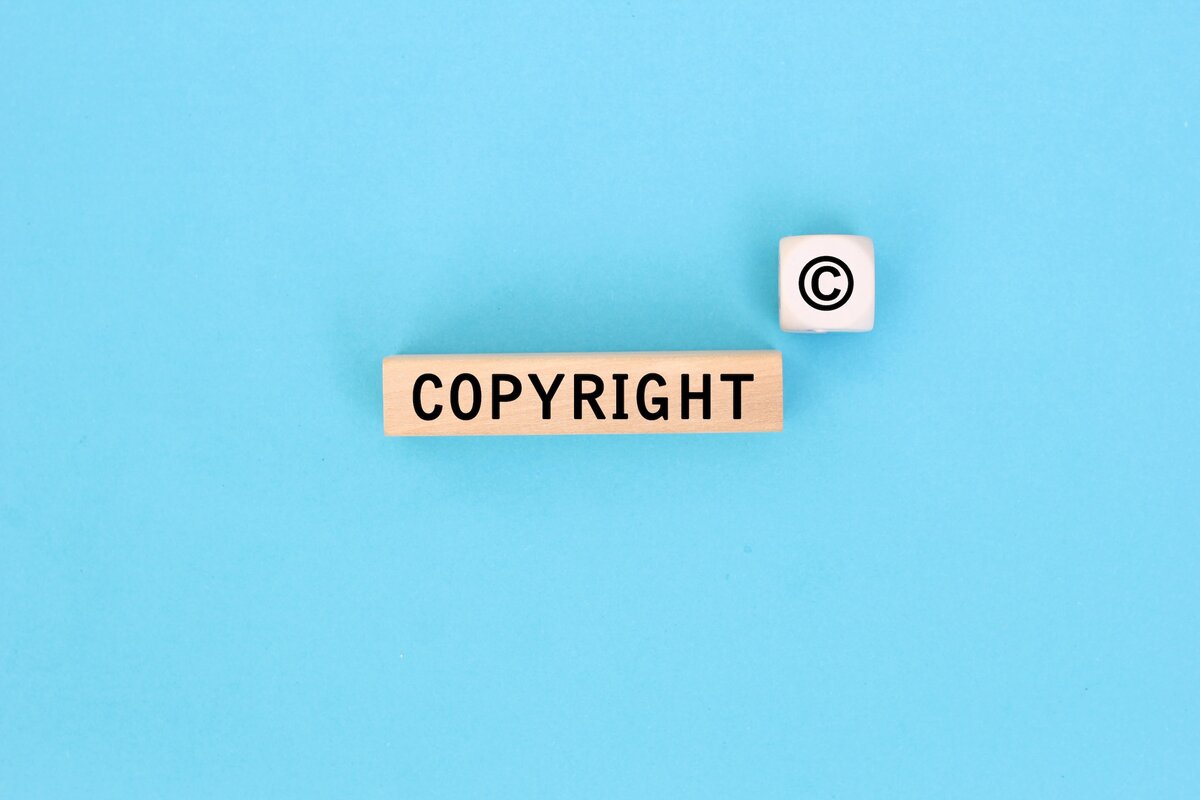Legal Update: Hong Kong Court Recognizes Application by Shanghai Liquidators
12 6月 2020
By Xiaosu Zhu (Watson & Band) and Anna Chan (OLN)
In a landmark decision by the Hong Kong Court of First Instance in Re Joint and Several Liquidators of CEFC Shanghai International Group Ltd (the “CEFC Case”), the Hong Kong Courts extended recognition and assistance to liquidators in Mainland China, which is a huge step towards Hong Kong-PRC coordination in cross-border liquidations.
Previously, there has also been precedents whereby Hong Kong Court urged for multi-jurisdictional cooperation in cross-border liquidation cases. In Re Da Yu Financial Holdings Limited, the Court sanctioned a scheme of arrangement proposed by a Cayman-incorporated company listed in Hong Kong and commented that the full blown parallel schemes, instead of a simple recognition of foreign scheme, are an outmoded way of conducting cross-border restructuring. The CEFC Case now marks the first time that Hong Kong Courts has recognized and provided assistance to liquidators from the Mainland China, a non-common law jurisdiction.
Background
CEFC Shanghai International Group Limited (“CEFC”) is a PRC-incorporated company undergoing insolvent liquidation in the Mainland China. CEFC’s assets included a claim against its Hong Kong subsidiary, Shanghai Huaxin Group (Hong Kong) Limited, amounting to around HK$7.2 billion (the “Receivable”). Given the Subsidiary was in liquidation in Hong Kong, CEFC had submitted a proof of debt in respect of the Receivable.
Subsequently, CEFC’s liquidators (known as “administrators” in PRC) discovered that, before the liquidation, a creditor of CEFC had obtained default judgment against CEFC in Hong Kong for a sum of around EUR 29 million, and a Garnishee Order nisi in respect of the Receivable.
If CEFC was only asserting itself as the creditor of the Hong Kong subsidiary, it would only rank pari passu with the judgment creditor, therefore running the risk that it would be too late to enforce upon the Receivable if the judgment creditor obtained Garnishee Order absolute.
To mitigate such risk, the PRC liquidators sought recognition of the PRC insolvency proceedings, and assistance for a stay of the Garnishee proceedings. The Hong Kong Court granted such recognition and assistance, and allowed the stay of the creditor’s Garnishee proceedings.
Criteria for application to the Hong Kong Court
Mr. Justice Harris summarized the now well-established principles and procedures governing applications to the Courts of Hong Kong for recognition and assistance. Provided that:-
- the foreign insolvency proceedings are collective insolvency proceedings; and
- the foreign insolvency proceedings are opened in the company’s country of incorporation,
the Court may recognize insolvency proceedings in a civil law jurisdiction. Upon recognition, the Court will then grant assistance to the foreign liquidators by applying Hong Kong insolvency law. The above 2 criteria were ruled to be satisfied in the present case.
However, in the judgment the Court said that it will not grant the foreign liquidators all powers as are available to a liquidator appointed pursuant to the Companies (Winding Up and Miscellaneous Provisions) Ordinance (Cap. 32 of the Laws of Hong Kong)(“CWUMPO”). Powers of assistance granted to foreign liquidators are limited to:-
- enabling the foreign liquidators to do something which they could do under the law by which they are appointed;
- only when it is necessary for the performance for the foreign liquidators’ function; and
- where it is consistent with the substantive law and public policy of the assisting court.
Mr. Justice Harris opined that the case satisfied all of the above requirements, and observed that there were considerable similarities in the insolvency laws of Hong Kong and the PRC, such as the powers and duties of liquidators and pari passu distribution of debtor’s assets.
His Lordship also held that, if a creditor commences Garnishee proceedings in Hong Kong after liquidation has commenced, the Garnishee proceedings should be terminated. Even if an order nisi has been obtained before the foreign insolvency proceedings, the Court has discretion to make the order absolute. In coming to the conclusion, the English case Galbraith v Grimshaw was held to be incompatible with modern insolvency laws (and indeed the case has been subject to much judicial and academic criticism) and therefore no longer applicable.
Significance
This case is the first ever in time that Mainland Chinese liquidators have applied for and been granted recognition from the Hong Kong Court. Although the Court cautioned that assistance granted to PRC liquidators should be on a case by case basis, this case certainly lends support to future PRC liquidators in seeking Hong Kong Court’s recognition and assistance (provided that they pass the thresholds). Immediately following this case, on 4th June 2020 in Re Shenzhen Everich Supply Chain Co Ltd, Mr. Justice Harris made another ruling recognizing the Shenzhen bankruptcy proceedings and the appointment of the liquidator by Shenzhen intermediate Court, empowering the liquidator to exercise its powers in Hong Kong.
In light of the growing trend for PRC-incorporated companies to hold assets in Hong Kong, it is expected that where such companies enter liquidation, liquidators will seek Hong Kong Court’s recognition relying on this landmark judgment. If the mainland Chinese authorities are agreeable to promoting a unitary approach to trans-national insolvencies like Hong Kong, it is likely that this case will become highly persuasive in favour of Hong Kong Courts granting recognition and assistance to mainland liquidators.
This result can also be contrasted with past cases where the Hong Kong Courts refused assistance to trustees of a foreign-incorporated company governed by foreign jurisdictions, such as in the case of China Fishery Group Ltd where it was held that the companies involved did not have a connection with the US. In that case, the companies involved were found to have been acting in bad faith by filing the Chapter 11 proceedings in the US and appointing the trustee thereunder, in an attempt to defeat the creditor’s enforcement action under the Hong Kong jurisdiction. As such, the Courts declined to allow the companies to reap from their egregious conduct.
It appears to suggest that, provided that companies have acted in good faith in the proceedings, Hong Kong Courts are prepared to offer recognition and assistance to liquidators. This would be in the interest of expediting cross-border insolvency and restructuring in future.
The position by the PRC Courts remains to be tested. According to the PRC Enterprise Bankruptcy Law, if a legally effective foreign ruling on a bankruptcy case involves the property of a debtor within the territory of Mainland China, and an application for the recognition and execution thereof is filed with the Mainland Court, the Mainland Court shall, according to international treaties or the principle of reciprocity, review the ruling, and decide whether to recognize or execute such ruling having regard to factors such as whether such recognition or execution would violate the fundamental principles of the law of Mainland China, impair state sovereignty, security and social public interests, or impair the legitimate rights and interests of the debtors within Mainland China. However, in practice, so far there is no precedent in which Mainland Courts recognize the effectiveness of foreign bankruptcy proceedings.
Now that Hong Kong Courts have made this breakthrough, it is expected to lead to positive influence on Mainland Courts. Whether Mainland and Hong Kong will further recognize and cooperate in cross-border insolvency and restructuring in the future will largely depend on whether Mainland Courts, like the Hong Kong Courts, will adopt a unified approach. In fact, mutual recognition by the Mainland and Hong Kong Courts is believed to be a two-way street and the Supreme People’s Court in China has begun to explore and establish institutional arrangements for judicial assistance in insolvency cases with relevant parties in Hong Kong. This case definitely provides reference and practical experience in this area and will have a great impact on foreign application for recognition in the Mainland in the future.
Other points to note in cross-border insolvency
- Application of pari passu principle
It is commonly the case that in cross-border insolvency, a company in one jurisdiction holds assets situated in a foreign jurisdiction. It has been held in Re Guangdong International Trust & Investment Corporation Hong Kong (Holdings) Ltd that it is possible to apply the principle of pari passu distribution to distribute the insolvent estate’s assets both in Hong Kong and abroad.In that instance, the liquidators of the company were tasked with distributing the company’s cash in a PRC bank account, and its Hong Kong assets, to the creditors. Given the mainland regulations on currency transfer, the cash in the PRC bank account could only be transferred to other PRC bank accounts. The Court allowed the proposed mechanism of distribution of the PRC account balance to creditors who had a PRC account, and distribution of Hong Kong assets to those who did not receive the PRC account balance, both on a pari passu basis. Despite this mechanism not involving a pooling of all assets of the company before pari passu distribution, it was held that the principle was concerned with achieving a substantive result but not the procedural mechanisms. This is a welcoming flexibility that would no doubt assist future liquidators in proposing methods of distribution of assets, where there might be procedural difficulty in adhering to the traditional understanding of pari passu principle.
- Bankruptcy proceedings vs. garnishee proceedings
Notably, if the parent company undergoing liquidation were a Hong Kong company instead of a Shanghai entity, it would still result in the way as in the CEFC Case (that the Garnishee proceedings could not continue against the company’s receivables). This is by virtue of section 186, CWUMPO, which provides that when a winding-up order has been made, or a provisional liquidator has been appointed, no proceeding shall be proceeded with or commenced against the liquidating company (except by leave of the Court). It is a well-settled principle that the Court has inherent jurisdiction to stay proceedings (e.g. Garnishee proceedings) or stay execution against a company in liquidation, with good policy reasons behind. It would be “unfair or more likely an abuse” if, in liquidation where pari passu distribution of a judgment debtor’s asset is in place or imminent, the judgment creditor gains an unfair advantage over other creditors by enforcing the judgment. In the CEFC Case, the stay of Garnishee proceedings was precisely because the Court wished to achieve the same result as it would in local winding-ups under section 186 CWUMPO, so that it may oversee creditor action to promote an orderly liquidation.
Comparison of the insolvency regimes in Hong Kong and Shanghai/PRC
Extrapolating on the Court’s ending remark on unitary approach by the two jurisdictions, this part sets out differences in winding-up proceedings in Hong Kong and Shanghai in order to explore the possibility of future similar treatment of Hong Kong liquidators by the PRC authorities.
| Hong Kong | Shanghai/ PRC | |
| Primary legislation | CWUMPO; andCompanies Ordinance (Cap. 622). | Enterprise Bankruptcy Law; andthe relevant Judicial Interpretations on Enterprise Bankruptcy Law by the Supreme People’s Court |
| Corporate rescue/ restructuring regime | No rescue regimes, but restructuring by scheme of arrangement is possible. | There are special chapters under the Enterprise Bankruptcy Law about corporate rescue and restricting, namely Chapter 8 about reorganization and Chapter 9 about reconciliation. |
| Insolvency test | Company is unable to pay its debts and if:- A creditor serves on the company at its registered office a Statutory Demand and the company neglects to pay the sum within 3 weeks of service; Execution or other process issued on a judgment or court order in favor of the creditor is returned unsatisfied; or After considering the contingent and prospective liabilities of the company, it is proved to the court that the company cannot pay its debts. The usual test relied upon is the cash flow test but the balance sheet test is also applicable, and is applied as the Court considers appropriate. | An enterprise is unable to pay its debts due and if: Its assets are not sufficient to pay all its debts (namely, the balance sheet test); or Such enterprise obviously lacks solvency (to some extent like the cash flow test). If the assets of a debtor exceed the liabilities on the balance sheet, the Court will hold that it obviously lacks solvency if: it is unable to pay its debts due to such reasons as the serious insufficiency of funds or the failure to realize property; or it is unable to pay its debts because the whereabouts of its legal representative is unknown and there is no other person responsible for managing its property; or it is unable to pay its debts upon enforcement of the Court; orit is unable to pay its debts because it has made a loss for a long time and it is difficult for it to turn losses into profits; or in any other circumstances which result in the loss of solvency of the debtor. As for reorganization, the threshold could be even lower; as long as the enterprise has apparently forfeited the ability to pay its debts, it may undergo reorganization according to the provisions of the Law. |
| Applicants | Winding up proceedings: Creditors, directors, shareholders Scheme of arrangement: Creditors, liquidators, shareholders | Bankruptcy Liquidation (winding ups): Creditors, debtor Reorganization: Creditors, debtor, shareholders who hold more than one-tenth of the debtor’s registered capital Reconciliation: Debtor |
| Secured creditors’ position | Secured creditors can enforce its security. | Secured creditors can enforce its security. |
| Transactions subject to challenge | Unfair preferences: If the company previously entered into any transaction influenced by the desire to prefer a particular creditor over creditors, the liquidator may apply to the Court to have the transaction set aside. Such transaction must have occurred:In the 6 months before liquidation has commenced; orIn the 2 years before liquidation has commenced if transaction is with an associate of the company, its director or shadow director. Dispositions in compulsory liquidation: All dispositions of property, transfer of shares, or alteration of shareholders’ status after commencement of winding up will be void. Extortionate credit transactions: A liquidator may apply to the Court for various orders regarding a transaction, which requires grossly exorbitant payments or is otherwise grossly against fair dealing principles, entered into within 3 years before commencement of the winding up. Transaction at undervalue: Transactions at undervalue entered into within 5 years before liquidation has commenced may be voidable. This refers to transactions by the company where the company receives consideration significantly less than that provided by the company, or receives no consideration. Floating charges: A floating charge may be invalid if it was created:Within 2 years before the liquidation has commenced, if created in favor of an associate of the company, its director or shadow director; orWithin 1 year before the liquidation has commenced, if created in favor of other persons. | Within 6 months before the Court accepts the application for bankruptcy, if the debtor meets the bankruptcy test but still pays debts to specific creditors, the liquidator is entitled to request the Court to rescind the payoff unless the debtor’s property benefits from such payoff.After the Court accepts the application for bankruptcy, it shall be invalid for the debtor to pay off debts to a particular creditor.The following activities concerning the property of the debtor shall be invalid and the liquidator is entitled to recover the property:Hiding or transferring property for avoidance of debts;Fabricating debts or recognizing unreal debts.Within 1 year before the Court accepts the application for bankruptcy, the liquidator is entitled to request the Court to rescind the following activities concerning the debtor’s property:Transferring property free of charge; orTransferring property at obviously unreasonable low prices; orProviding property security for the debts that originally have no property security; orPaying in advance the debt undue; orWaiving creditsThe liquidator is entitled to recover the unusual income that the directors, supervisors and senior executives of the debtor have obtained by taking advantages of their authority of office and recover the enterprise property that they appropriate in the same manner. |
If you have any question regarding the topic discussed above, please contact our partners for further assistance.
Anna Chan
Partner of Oldham, Li & Nie
Xiaosu Zhu
Partner of Watson & Band
Oldham, Li & Nie Solicitors and Watson & Band have entered into formal association in 2020. The new Association will strengthen OLN’s China Legal Service Network and Watson & Band’s international practice, allowing the Association strategic and direct access to lawyers in different jurisdictions. With a deeper understanding of clients’ needs and behaviour, it will complement the ambitious growth of OLN and Watson & Band to provide high-quality legal services on a global scale.
Disclaimer: This article is for reference only. Nothing herein shall be construed as Hong Kong or PRC legal advice or any legal advice for that matter to any person. Neither Oldham, Li & Nie nor Watson & Band shall be held liable for any loss and/or damage incurred by any person acting as a result of the materials contained in this article. Shall you be interested to download this article as a brochure, please click on the following link: Legal Update: Hong Kong Court Recognizes Application by Shanghai Liquidators
Recent News

 Suite 503, 5/F, St. George's Building, 2 Ice House Street, Central, Hong Kong
Suite 503, 5/F, St. George's Building, 2 Ice House Street, Central, Hong Kong +852 2868 0696
+852 2868 0696














